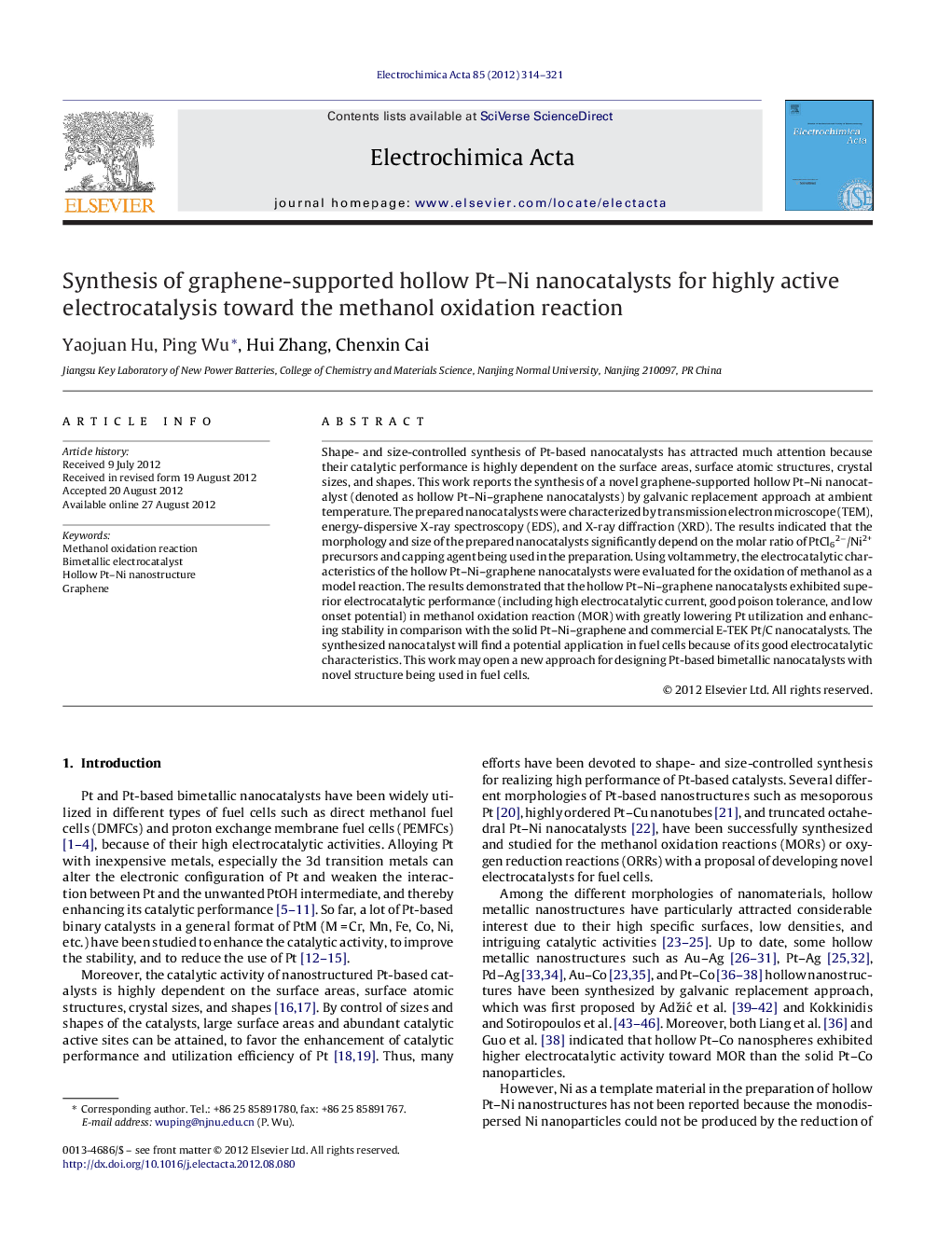| Article ID | Journal | Published Year | Pages | File Type |
|---|---|---|---|---|
| 187809 | Electrochimica Acta | 2012 | 8 Pages |
Shape- and size-controlled synthesis of Pt-based nanocatalysts has attracted much attention because their catalytic performance is highly dependent on the surface areas, surface atomic structures, crystal sizes, and shapes. This work reports the synthesis of a novel graphene-supported hollow Pt–Ni nanocatalyst (denoted as hollow Pt–Ni–graphene nanocatalysts) by galvanic replacement approach at ambient temperature. The prepared nanocatalysts were characterized by transmission electron microscope (TEM), energy-dispersive X-ray spectroscopy (EDS), and X-ray diffraction (XRD). The results indicated that the morphology and size of the prepared nanocatalysts significantly depend on the molar ratio of PtCl62−/Ni2+ precursors and capping agent being used in the preparation. Using voltammetry, the electrocatalytic characteristics of the hollow Pt–Ni–graphene nanocatalysts were evaluated for the oxidation of methanol as a model reaction. The results demonstrated that the hollow Pt–Ni–graphene nanocatalysts exhibited superior electrocatalytic performance (including high electrocatalytic current, good poison tolerance, and low onset potential) in methanol oxidation reaction (MOR) with greatly lowering Pt utilization and enhancing stability in comparison with the solid Pt–Ni–graphene and commercial E-TEK Pt/C nanocatalysts. The synthesized nanocatalyst will find a potential application in fuel cells because of its good electrocatalytic characteristics. This work may open a new approach for designing Pt-based bimetallic nanocatalysts with novel structure being used in fuel cells.
Graphical abstractFigure optionsDownload full-size imageDownload as PowerPoint slideHighlights► Graphene-supported hollow Pt–Ni nanocatalysts are synthesized by a facile approach. ► The catalyst exhibits the superior electrocatalytic performance in MORs. ► The catalyst can greatly lower Pt utilization compared with commercial catalyst. ► The catalyst can find use in catalysis, fuel cells, and other related fields.
